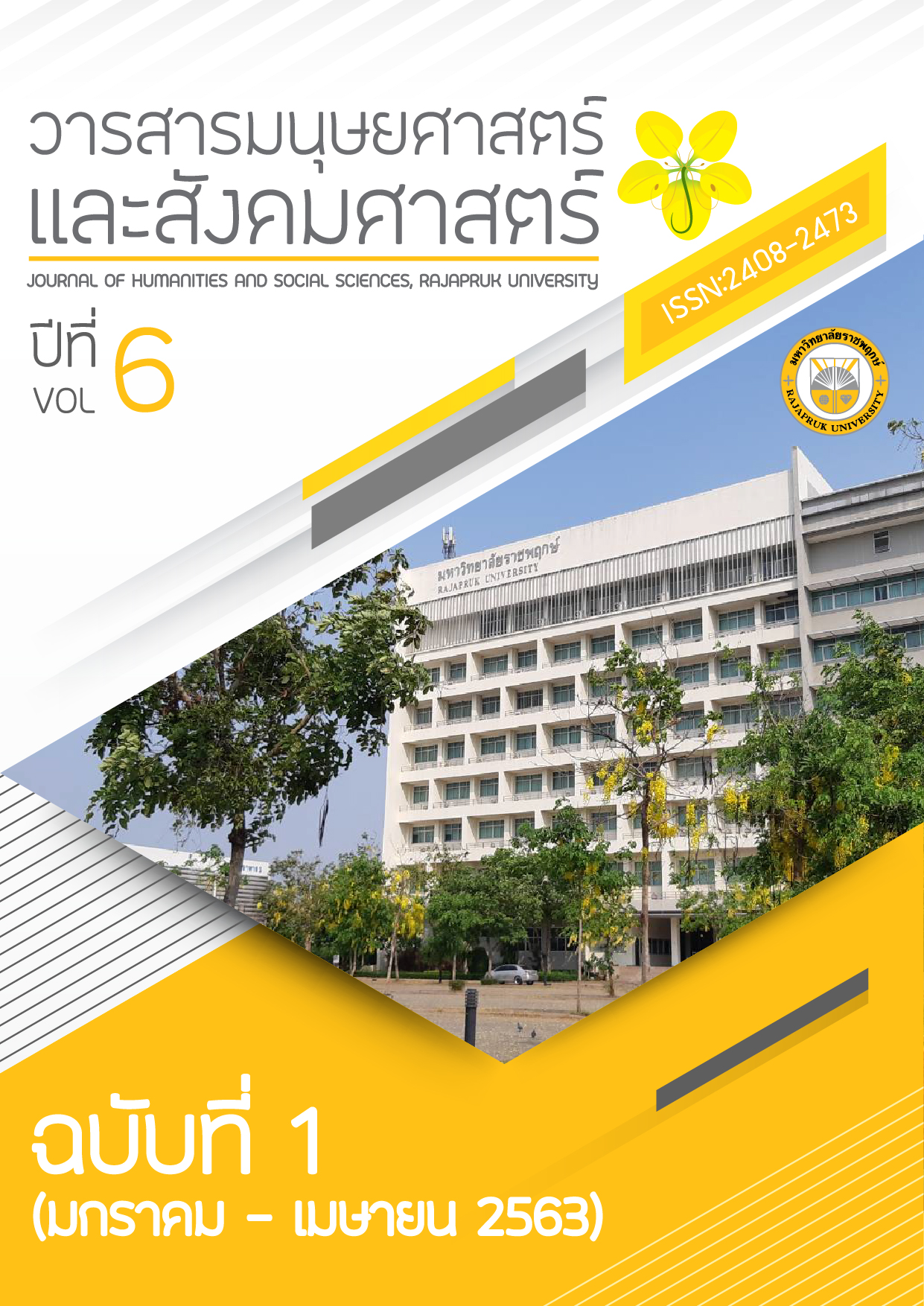แนวทางการพัฒนาชุมชนแห่งการเรียนรู้ทางวิชาชีพในสถานศึกษา สังกัดสำนักงานเขตพื้นที่การศึกษาประถมศึกษาหนองบัวลำภู เขต 1
Main Article Content
บทคัดย่อ
การวิจัยครั้งนี้มีวัตถุประสงค์เพื่อ 1) ศึกษาความเป็นชุมชนแห่งการเรียนรู้ทางวิชาชีพในสถานศึกษา สังกัดสำนักงานเขตพื้นที่การศึกษาประถมศึกษาหนองบัวลำภู เขต 1 และ 2) หาแนวทางการพัฒนาชุมชนแห่งการเรียนรู้ทางวิชาชีพในสถานศึกษา สังกัดสำนักงานเขตพื้นที่การศึกษาประถมศึกษาหนองบัวลำภู เขต 1 โดยแบ่งการวิจัยออกเป็น 2 ระยะ คือ ระยะที่ 1 การศึกษาความเป็นชุมชนแห่งการเรียนรู้ทางวิชาชีพในสถานศึกษา กลุ่มตัวอย่าง คือ ครูผู้สอน ที่มาจากการสุ่มกลุ่มตัวอย่าง จำนวน 310 คน เครื่องมือที่ใช้ คือ แบบสอบถามมาตราส่วนประมาณค่า 5 ระดับ มีความเชื่อมั่นเท่ากับ 0.97 วิเคราะห์ข้อมูลโดยการหาค่าเฉลี่ยและส่วนเบี่ยงเบนมาตรฐาน และระยะที่ 2 การหาแนวทางการพัฒนาชุมชนแห่งการเรียนรู้ทางวิชาชีพในสถานศึกษา ผู้ให้ข้อมูลมาจากการเลือกแบบเจาะจง จำนวน 12 คน เก็บข้อมูลโดยการสัมภาษณ์กึ่งโครงสร้าง วิเคราะห์ข้อมูลโดยการวิเคราะห์เชิงเนื้อหา และยืนยันแนวทางโดยผู้ให้ข้อมูลกลุ่มเดิม วิเคราะห์ข้อมูลโดยหาร้อยละ ผลการวิจัย พบว่า 1) ความเป็นชุมชนแห่งการเรียนรู้ทางวิชาชีพในสถานศึกษา อยู่ในระดับมากทั้งโดยรวมและรายด้านทุกด้าน และ 2) แนวทางการพัฒนาชุมชนแห่งการเรียนรู้ทางวิชาชีพในสถานศึกษา ได้แก่ 1. การมีภาวะผู้นำร่วม 2. การมีวิสัยทัศน์และเป้าหมายร่วมกัน 3. การมีระบบทีมร่วมมือร่วมใจ 4. การทบทวนไตร่ตรองผล 5. การสนับสนุน และ 6. การเรียนรู้และพัฒนาวิชาชีพ โดยแนวทางทั้ง 6 ด้าน ได้รับการยืนยันว่าใช้ได้ทุกแนวทาง
Article Details
เอกสารอ้างอิง
ทิศนา แขมมณี. (2557). “ปลุกการสอนให้มีชีวิตสู่ห้องเรียนแห่งศตวรรษใหม่,” ใน เอกสารประกอบการประชุมวิชาการอภิวัฒน์การเรียนรู้ สู่จุดเปลี่ยนประเทศไทย. หน้า 20 - 24. กรุงเทพฯ: สำนักงานส่งเสริมสังคมแห่งการเรียนรู้และคุณภาพเยาวชน.
บุญชม ศรีสะอาด. (2545). การวิจัยเบื้องต้น. พิมพ์ครั้งที่ 7. กรุงเทพฯ: สุวีริยาสาส์น.
ปภาวี พิพัฒนลักษณ์. (2557). กลยุทธ์การพัฒนาภาวะผู้นำของผู้บริหารโรงเรียนเรียนร่วมตามแนวคิดภาวะผู้นำที่ยั่งยืนเพื่อเสริมสร้างชุมชนการเรียนรู้ทางวิชาชีพ. ปริญญาครุศาสตรดุษฎีบัณฑิต สาขาวิชาบริหารการศึกษา จุฬาลงกรณ์มหาวิทยาลัย.
ปองทิพย์ เทพอารีย์. (2557). การพัฒนารูปแบบชุมชนแห่งการเรียนรู้เชิงวิชาชีพสำหรับครูประถมศึกษา. ปริญญานิพนธ์การศึกษาดุษฎีบัณฑิต สาขาวิจัยและพัฒนาหลักสูตร มหาวิทยาลัยศรีนครินทรวิโรฒ.
มารุต พัฒผล. (2557). การจัดการเรียนรู้ที่เสริมสร้างการรู้คิดและความสุขในการเรียนรู้. พิมพ์ครั้งที่ 2. กรุงเทพฯ: จรัลสนิทวงศ์การพิมพ์.
มินตรา ลายสนิทเสรีกุล. (2557). กลยุทธ์การบริหารโรงเรียนสู่การเป็นชุมชนแห่งการเรียนรู้วิชาชีพของโรงเรียนมัธยมศึกษาในสหวิทยาเขตเบญจบูรพา กรุงเทพมหานคร. ปริญญาครุศาสตรมหาบัณฑิต สาขาวิชาบริหารการศึกษา จุฬาลงกรณ์มหาวิทยาลัย.
รัตนะ บัวสนธ์. (2556). วิจัยเชิงคุณภาพการศึกษา. พิมพ์ครั้งที่ 4. กรุงเทพฯ: สำนักพิมพ์แห่งจุฬาลงกรณ์มหาวิทยาลัย.
วรลักษณ์ ชูกำเนิด. (2557). โรงเรียนแห่งชุมชนการเรียนรู้ทางวิชาชีพครู เพื่อการพัฒนาวิชาชีพครูที่เน้นผู้เรียนเป็นหัวใจสำคัญ, วารสารวิทยบริการ มหาวิทยาลัยสงขลานครินทร์. 25(1) มกราคม - เมษายน: 93 – 102.
วิจารณ์ พานิช. (2555). วิถีสร้างการเรียนรู้เพื่อศิษย์ในศตวรรษที่ 21. กรุงเทพฯ: มูลนิธิสดศรี- สฤษดิ์วงศ์.
เสริมศักดิ์ วิศาลาภรณ์ และคณะ. (2545). รายงานการวิจัยรูปแบบเครือข่ายการพัฒนาครูและบุคลากรทางการศึกษาตามพระราชบัญญัติการศึกษาแห่งชาติ พ.ศ. 2542. กรุงเทพฯ: สำนักงานคณะกรรมการข้าราชการครู.
สำนักงานเขตพื้นที่การศึกษาประถมศึกษาหนองบัวลำภู เขต 1. (2561). แผนพัฒนาการศึกษาขั้นพื้นฐาน 5 ปี (พ.ศ. 2561-2565). หนองบัวลำภู: สำนักงานฯ.
DuFour, R. (2004). What is a professional learning community. Educational Leadership, 61(8): 6 - 11.
Hord, S. M. (2003). Professional learning communities: Communities of continuous inquiry and improvement. Austin: Southwest Educational Development Laboratory.
Krejicie, R. V. and Morgan, D. W. (1970). Determining Sample Size For Research Activities. Education And Psychological Measurement. 30(3): 607 - 610.
Rovinelli, R. J., and Hambleton, R. K. (1977). On the use of content specialists in the assessment of criterion-referenced test item validity. Dutch Journal of Educational Research, 2: 49 - 60.


